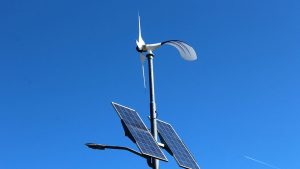 The increasing popularity of electric vehicles suggests that the future of the car industry lies in alternative energy sources. Car manufacturers have taken note, and they’re spending a lot of time and money developing new technologies that will power vehicles without harming the environment.
The increasing popularity of electric vehicles suggests that the future of the car industry lies in alternative energy sources. Car manufacturers have taken note, and they’re spending a lot of time and money developing new technologies that will power vehicles without harming the environment.
Toyota stands out as the most successful company in the race to discover alternative fuel sources. In 2015, the company received 4,214 patents for new technologies. That’s nearly 2,000 more patents than any other car manufacturer. While no one knows when these new technologies will reach dealerships, you can expect to find these three alternative energy innovations in the near future.
Magnesium Batteries
Magnesium battery technology is one of the most promising breakthroughs for Toyota. Researchers working at Toyota’s Research Institute of North America have found that they can build batteries that use magnesium instead of lithium, which currently dominates rechargeable battery technology.
The team hasn’t perfected the battery yet, but it gets closer every day. At first, the researchers struggled to find an electrolyte that would work well with magnesium. That’s a huge step forward to reaching their goal.
Once Toyota completes this project, it will have the ability to make smaller, lighter batteries that can hold more electricity than lithium ion batteries. The researchers also believe they can develop a magnesium battery that costs less to manufacture. That would solidify Toyota’s position as the world’s most advanced maker of alternative fuel resources.
Solar Recharging
Toyota is exploring several technologies that could extend the range of electric vehicles. A solar recharging system, however, is one of the most innovative approaches. Toyota’s exhibit at Smart Community Japan 2016 featured a redesigned Prius PHV with rooftop solar panels.
If this technology reaches the consumer market, you could recharge your electric vehicle’s battery just by driving on sunny days. The obvious limitation is that this system would only work well on days when the sun shines. Still, it’s a smart idea that can improve electric vehicles when sunlight is available.
Hydrogen Fuel
The Toyota Mirai already gets power from hydrogen. The design takes air from the car’s front intake grilles and pushes hydrogen fuel through a cell stack that generates electricity. You essentially have an independent power station built into your vehicle. One of the best things about hydrogen fuel is that it only expels water. The Mirai doesn’t make any harmful exhaust. It just drips water out of the tailpipe.
At the moment, Toyota’s Mirai is only available in California. No other state has enough hydrogen fuel stations to support them. If it proves popular, though, the Mirai’s success could encourage more fueling stations to include hydrogen. That would make it possible for drivers to generate their own electricity without adding pollution to the air.
It’s impossible to determine which of these technologies will succeed. They all have their benefits, but each also has its drawbacks. Toyota may decide eventually to use multiple technologies to create a new type of hybrid vehicle, or it may perfect one option that dominates the market.
Image via Pixabay





